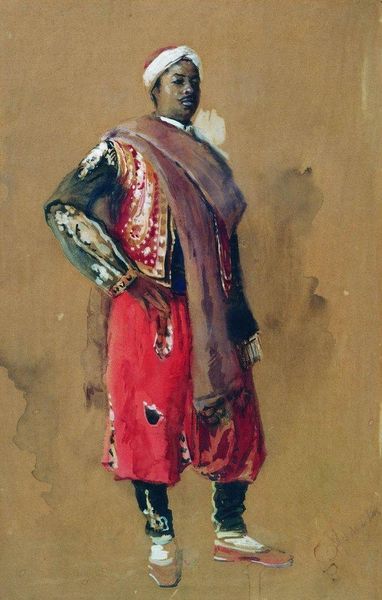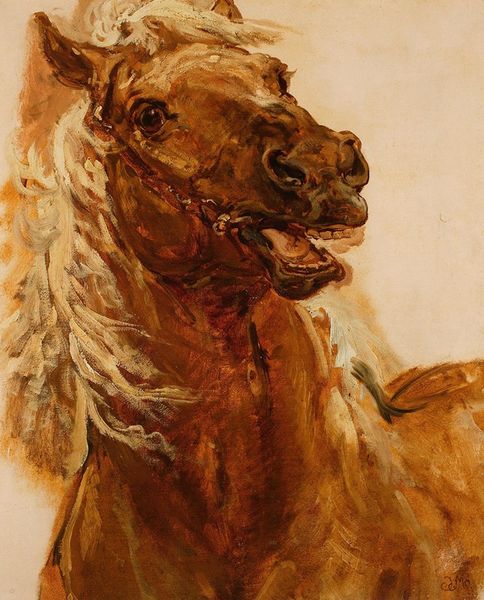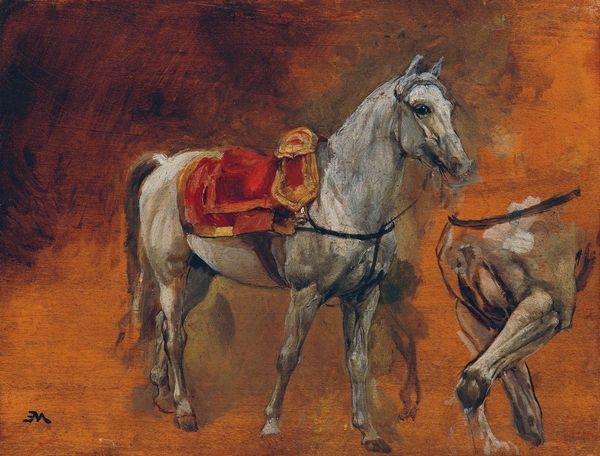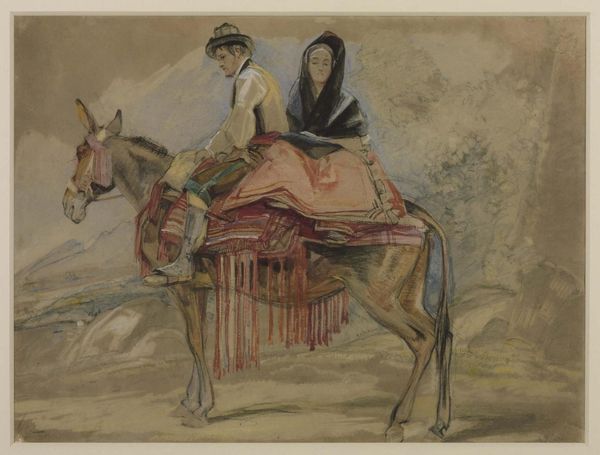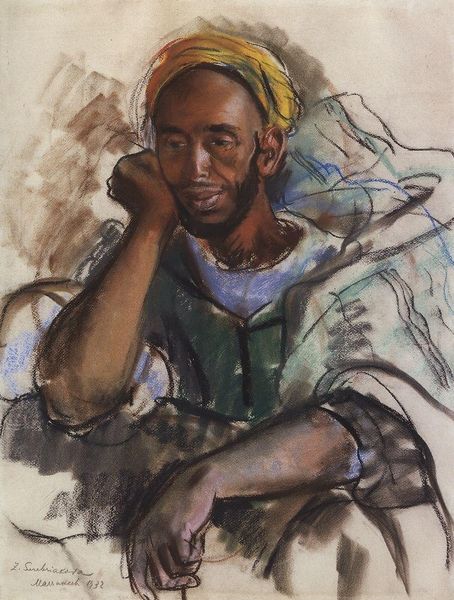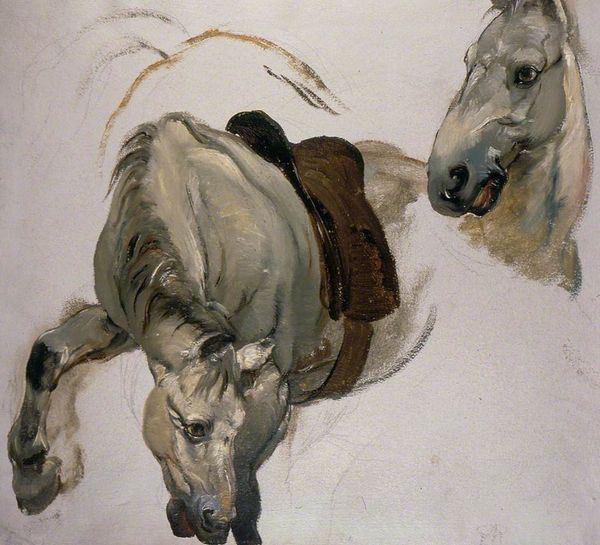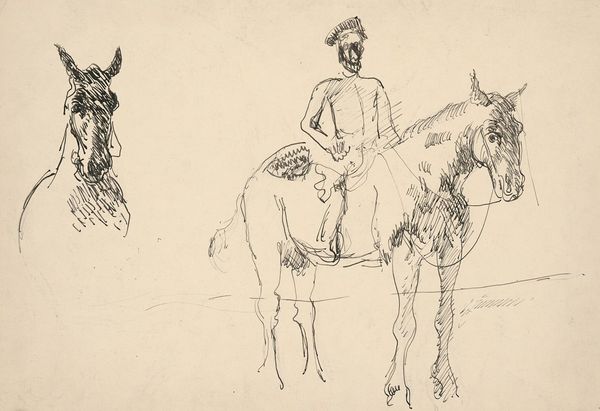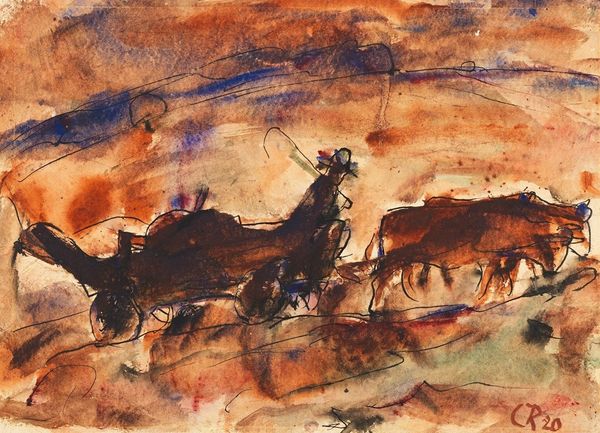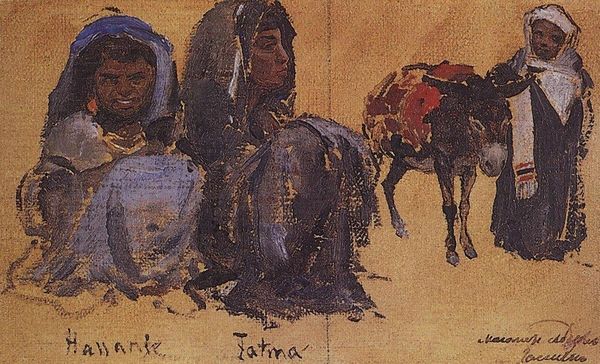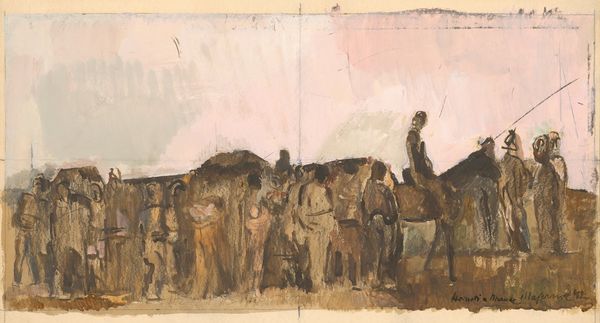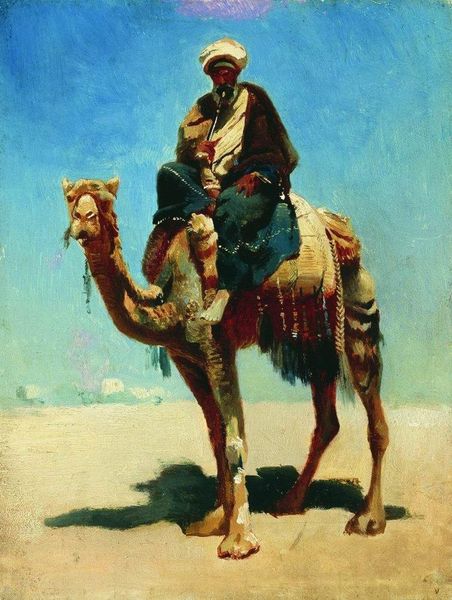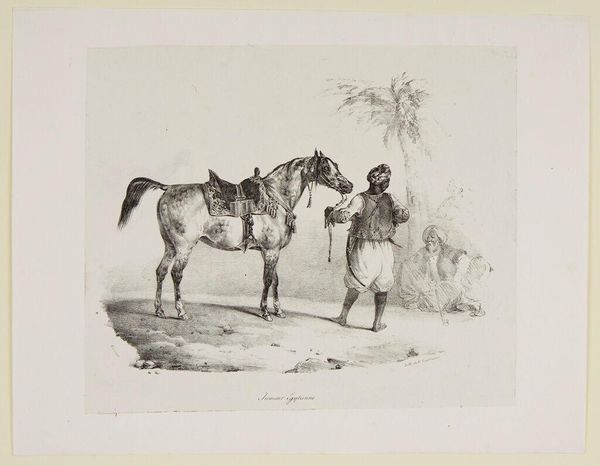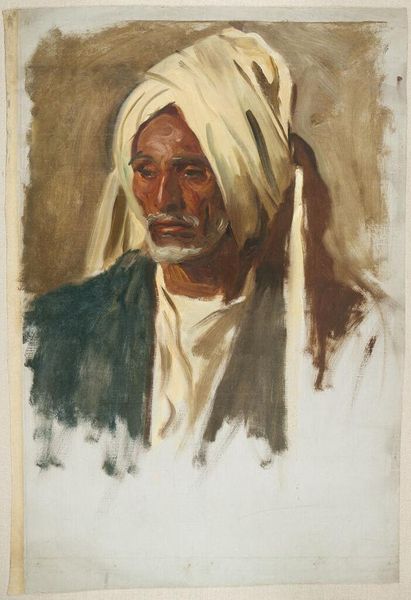
drawing, charcoal, pastel
#
portrait
#
african-art
#
drawing
#
landscape
#
charcoal drawing
#
portrait drawing
#
charcoal
#
pastel
#
charcoal
Copyright: Zinaida Serebriakova,Fair Use
Curator: Zinaida Serebriakova’s "Arab on a Donkey," created in 1932, immediately strikes me as a work imbued with stillness and quiet dignity. What are your initial thoughts? Editor: The texture, first of all! Look at how she's rendered the fabrics, the fur, the animal's hide—the mark-making is so tangible. I’m immediately drawn to the material presence of it. Curator: Absolutely, and it's vital to consider the context: Serebriakova’s travels in North Africa opened her to new cultural encounters and portrait subjects outside the Russian aristocracy she was familiar with, engaging questions of race and representation. How might her perspective as a Russian émigré shape her depiction of this Arab subject? Editor: It’s interesting to think about her specific material constraints then. She relies on charcoal and pastel here; this implies an immediacy of materials, something readily accessible. I’d be curious to know if this choice of medium impacts her gaze, offering both opportunity and possibly setting limits to her portrayal of place and sitter. Curator: Definitely. The choice also softens potentially stark lines of colonial encounter, inviting more nuanced consideration of labor and travel across gender, race, and class in 1930s North Africa. Does this, to you, challenge traditional high art categorizations given her background? Editor: It absolutely complicates the issue. It challenges the very concept. The immediate impression created by the textured surface of this image makes you wonder about the modes of cultural consumption involved: how does the drawing surface itself bear witness to intercultural exchanges between the artist and sitter? Curator: Precisely. It is through close visual examination that we are pushed towards ethical discussions on art making itself. This invites us to consider if the portrait's power arises from Serebriakova's keen observations across differences. Editor: For me, looking closely at materials pushes these hard questions front and center—and encourages further conversations between process, making, and social significance. Curator: I concur; there's much to consider through both avenues in this instance. Thank you!
Comments
No comments
Be the first to comment and join the conversation on the ultimate creative platform.
